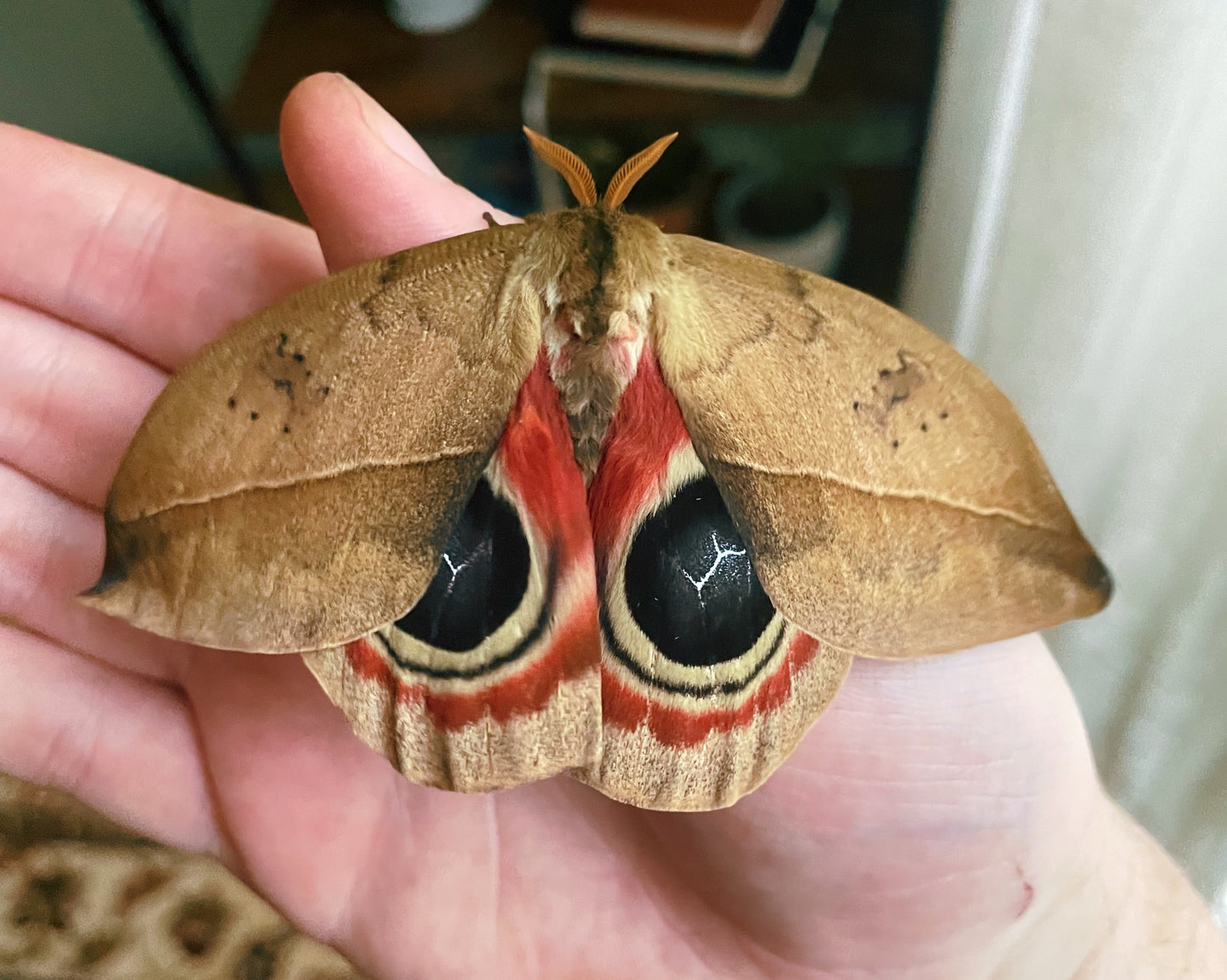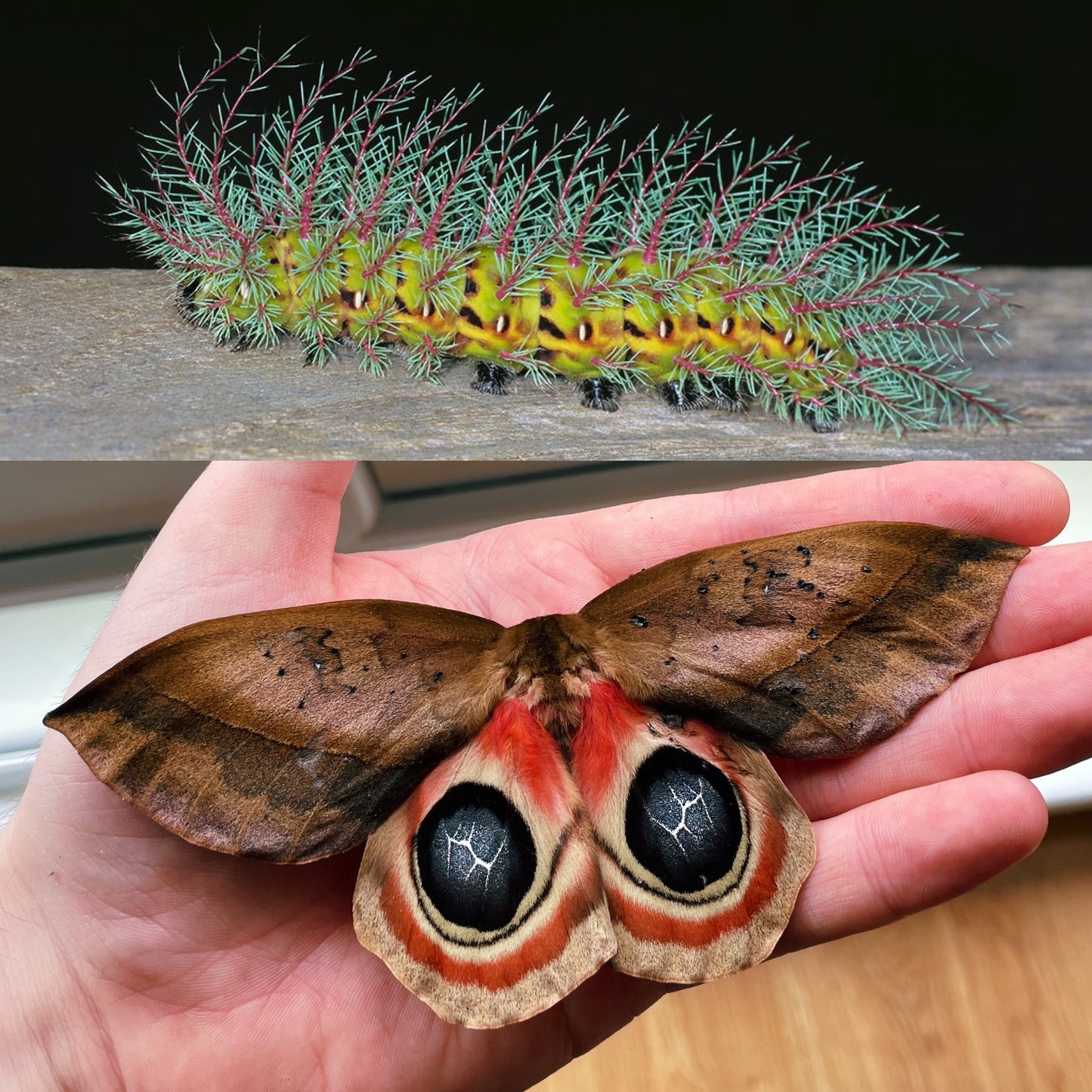Bugs & Butterflies UK
Bullseye Silk-Moth EGGS (Automeris metzli)
Bullseye Silk-Moth EGGS (Automeris metzli)
Couldn't load pickup availability
We currently have two breeding stocks of this species and will have the first eggs in November. Due to a healthy stock number we have reduced egg prices significantly!
This is a very striking silk-moth species, easily one of the largest Automeris we have ever encountered, with bright red patterning and huge eye-spots on the hind-wing which are exposed when the moth is disturbed. The range of Automeris metzli (Salle, 1853) extends from southern Mexico through Central America and into Ecuador, Columbia, and Venezuela in South America, with peak flight times in September/October at the beginning of the wet season. In captivity this species breeds continually when conditions are relatively warm and humid, however pupae may remain dormant within their cocoons if it is too cold or dry.
Caterpillars of this species are spectacular - bright green bodies with red and blue spines - and not at all difficult to rear. They accept many different host plants with a preference for Prunus (including stone fruits and Laurels), Rubus (Raspberry, Blackberry), Willows and Oaks. Instead of the typical 5 instars, metzli goes through 6 or 7 instars before pupating, gaining significant size before constructing a cocoon which they cover with their spines as a protective measure against predation whilst in the pupal stage. Note that the spines which cover these larvae are stinging, so handling this species should probably be avoided unless absolutely necessary, and even then using gloves! Pupae emerge fairly quickly within 4-6 weeks, producing adults that are very large for the family Automeris, and typically breeds easily. Pairings can be brief and may not always be observed, but viability of eggs can be determined by the presence of a black spot (micropile) on each egg, indicating that fertilisation has taken place. Typical of Automeris, hatching takes longer than many other silk-moths at around 20-25 days
Host plants: Portuguese Laurel (Prunus lusitanica), Cherry (Punus avium, P. padus, etc), Oak (Quercus), Willow (Salix), Raspberry and Blackberry (Rubus), Hawthorn (Crataegus), and probably others!
Difficulty: Easy (1/10)
Temperature: Room temperature; humidity for cocoons.
Life-cycle: Continually brooded; pupae can diapause
Share













